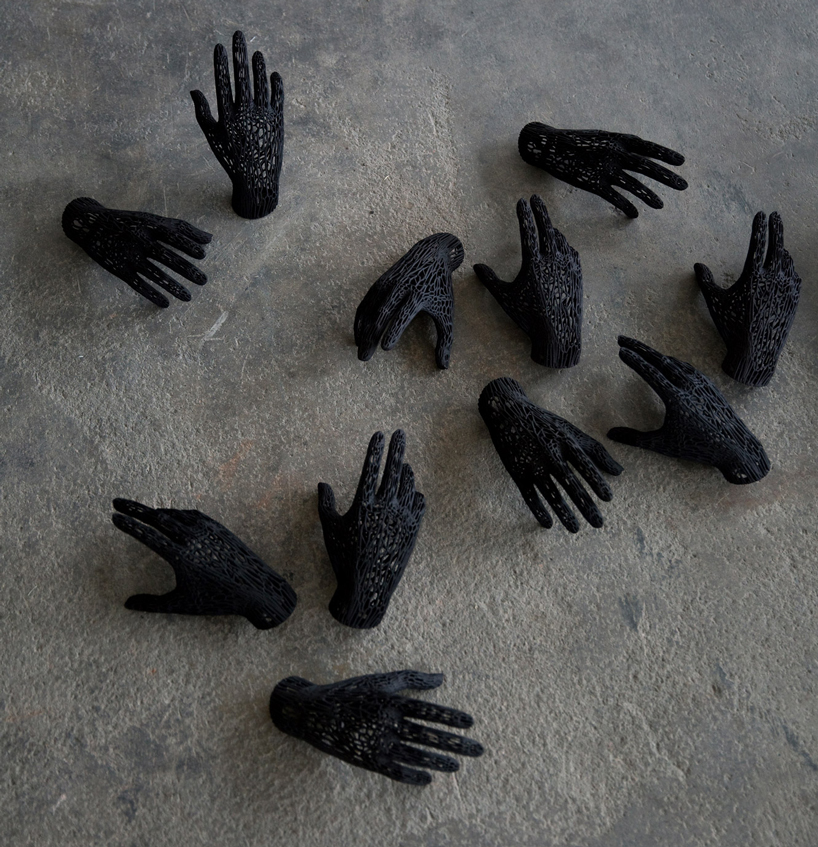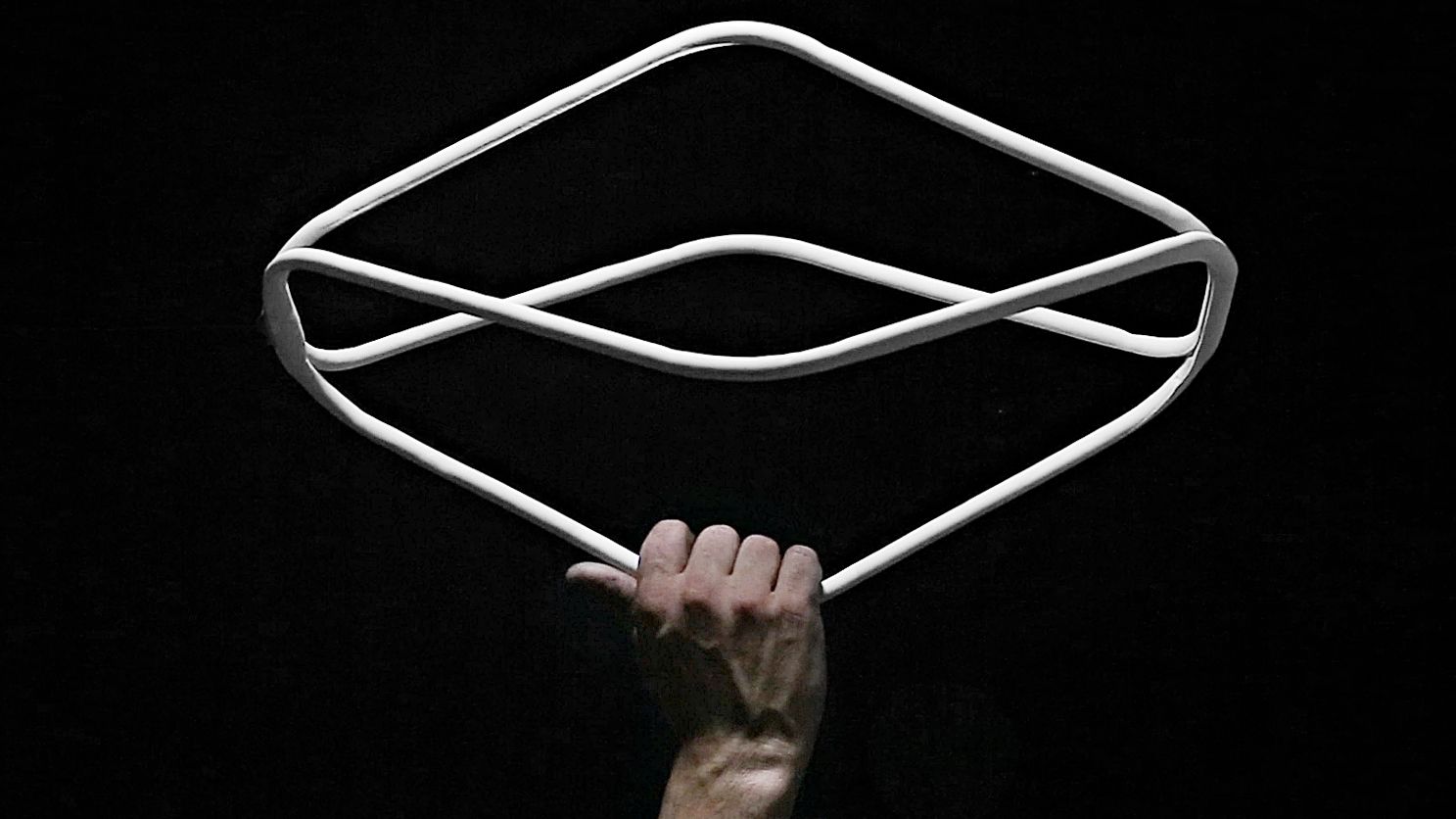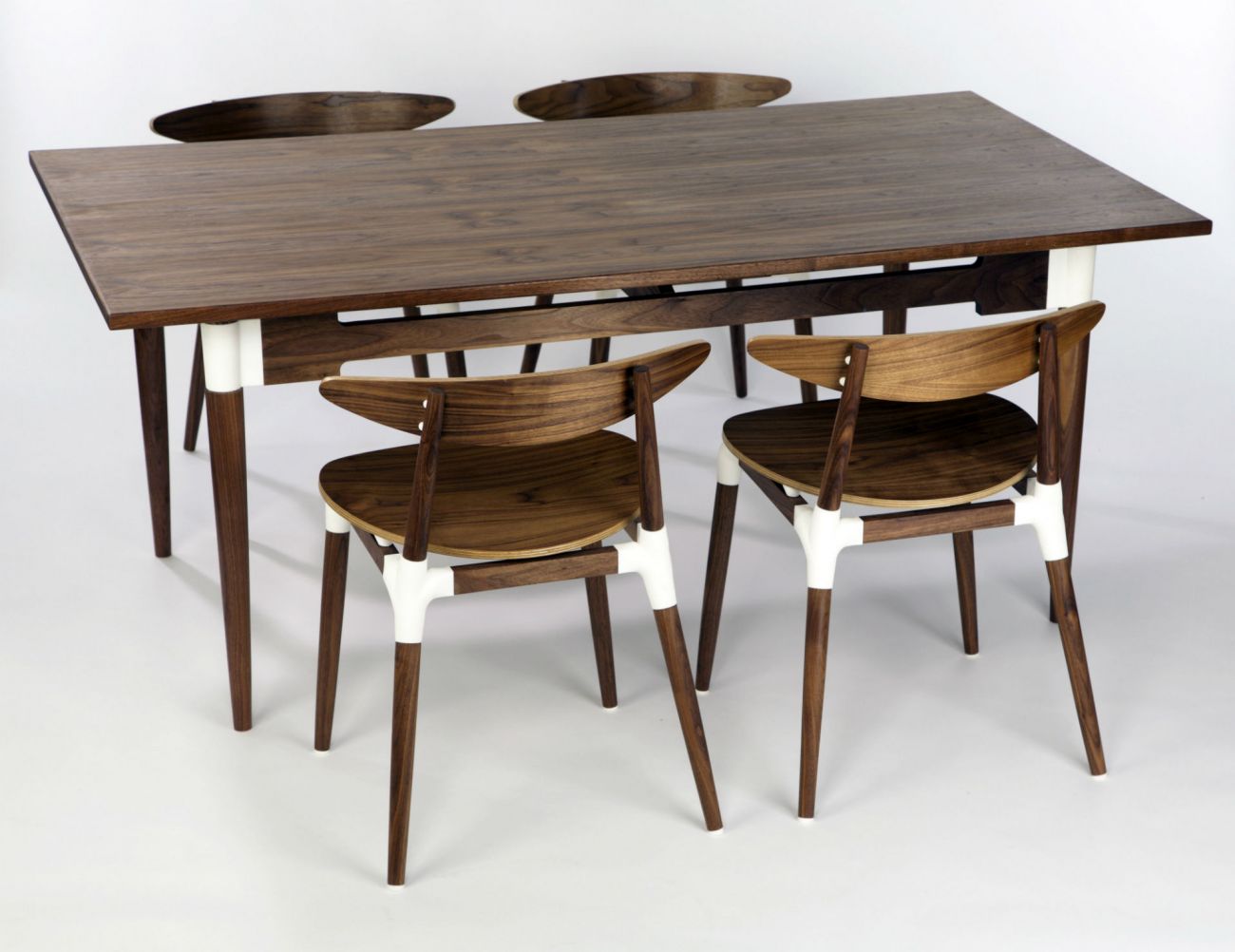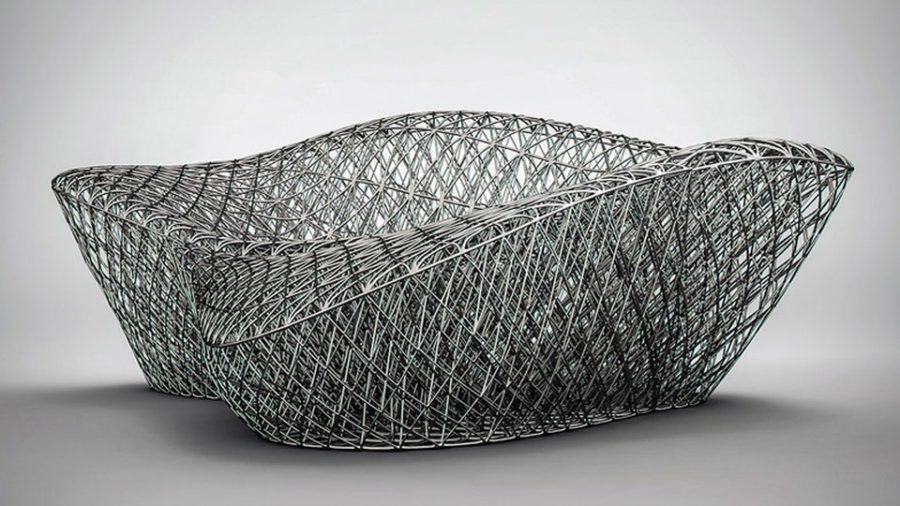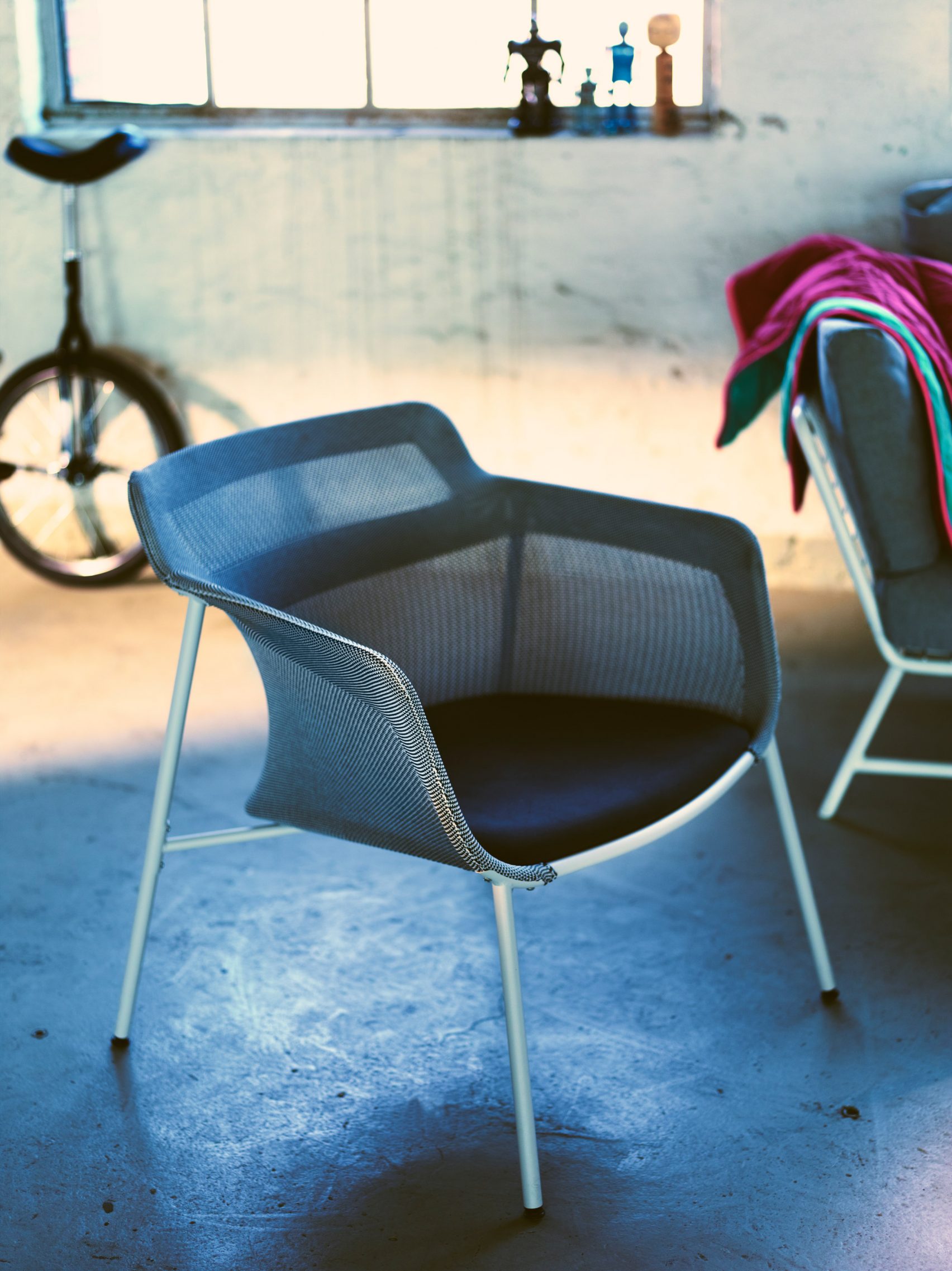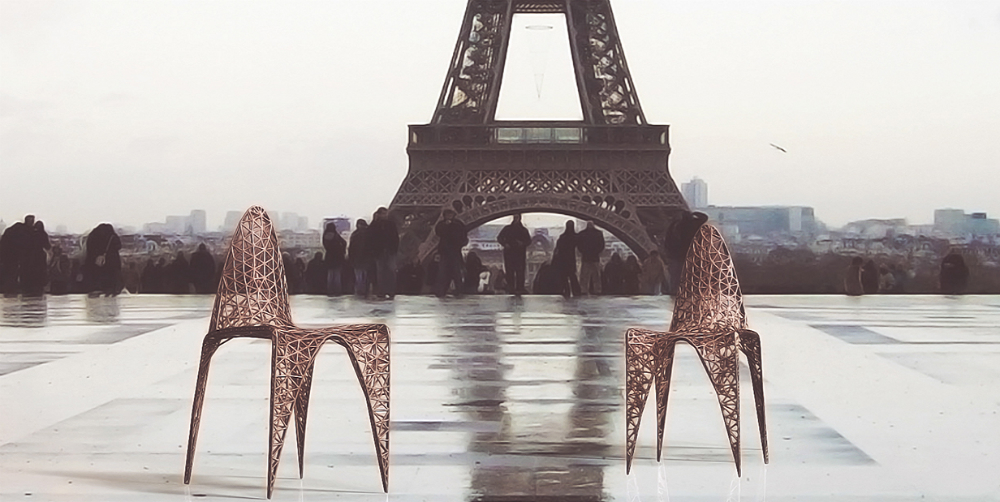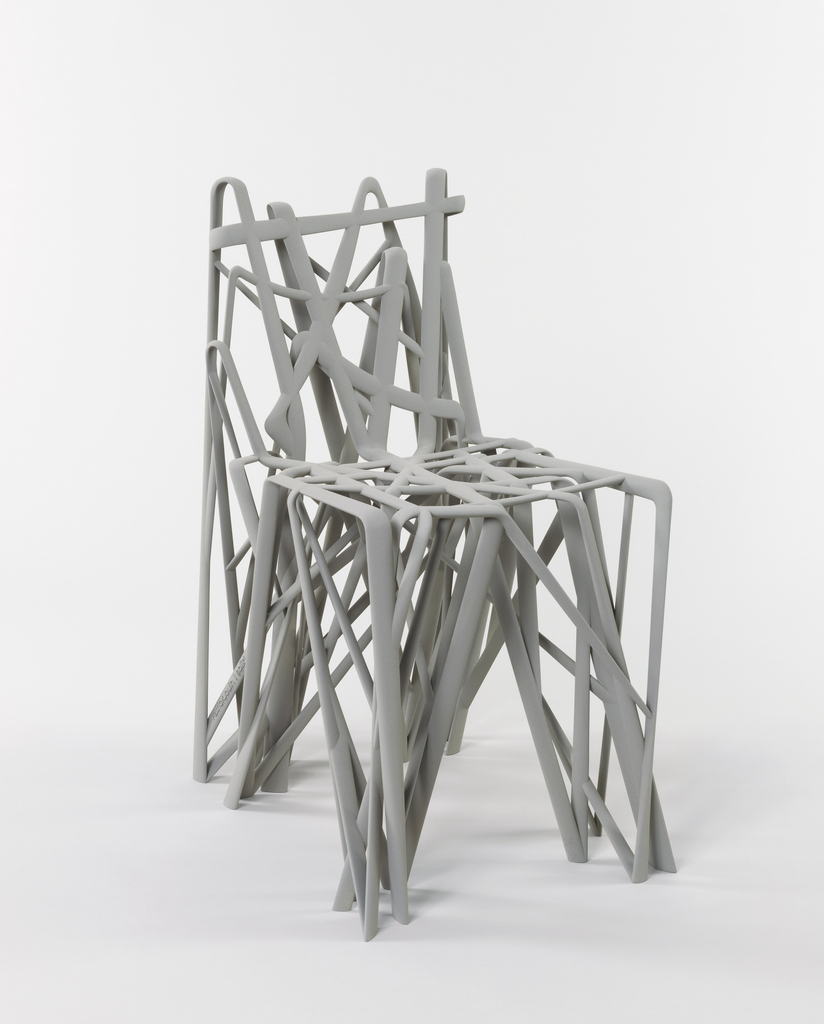3D printed furniture on its way to homes of the future
Posted By Jessica Van Zeijderveld on Feb 21, 2018 | 0 comments
The home decor market and the home furnishing industry in general have made great use of 3D printing in the past and in the present. A fairly ‘’new’’ concept (due to it becoming more efficient, accessible, and even commonplace the past few years), the 3D printing industry could offer some great advantages for home decoration and furniture. Home decor goes hand in hand with design. No customer is the same when it comes to a prefered style or design which results in a billion different outcomes and possibilities for custom furniture. Products such as coffee tables, beds, chairs but also general decorative pieces fitting office or home furniture can be gorgeously 3D printed without the production being restrained in design or time management.
In this blog post, we will show you 3D printed home decor products and furniture created by either large companies such as IKEA or by independent designers. Before doing so, let’s start with answering the question: ”Why you should use 3D printing in your company in the home furnishing industry or home decor market.”
(Mass) production with additive manufacturing
We have already shown you how 3D printing is used for specific home decor objects such as lamps and how laser cutting is used for furniture. Now we would like to inspire you but mostly inform you on the use of 3D printing for furniture and decoration. Companies who wish to (mass) produce their products hold back on additive manufacturing due to being left in the dark on not knowing how 3D printing could actually work for their production line. A bias that exists surrounding 3D printing and the 3D printing industry is that it is only meant for prototyping products and designs or singular small-scale production of custom furniture. We would like to remove any doubts and questions associated with additive manufacturing you might have at the moment all the while giving you real-life examples of companies who took the risk and profited.
Two reasons to convince you to 3D print furniture
There are two specific reasons to use additive manufacturing for creating furniture. More general reasons for using 3D printing include reduced costs, fewer steps in the process and faster implementation of modifications.
Design
The first and foremost reason for choosing to 3D print furniture is to be able to integrate an element of unique 3D printing design. This product design should also be the main selling point of the product when 3D printing is used because otherwise, it would be less expensive to use regular manufacturing for your production line. Regular manufacturing would not be able to integrate complex geometries and product design forms, specific shapes and customization options, which in turn could lead to extra revenue streams.
Lightweighting
Another reason to use 3D printing for furniture is the fact that 3D printed objects can be lightweighted. Lightweighting is a 3D printing process of changing the density of the objects. Changing the density can be done thanks to advanced 3D software and 3D printers, which results in the possibility to remove some mass and thus making the object extremely light. Making the objects weigh less than normally heavy weighing furniture like sofas is a big advantage when it comes to transport for both the company and during post purchase for the customers.
Companies that integrated the use of 3D printed furniture
We went over the advantages of using additive manufacturing for furniture but now you can find some great examples below. These furniture designs and actually made examples are done by independent designers who had projects done for private customers but there are also real-life examples made by medium to larger sized companies. You will find that most of these examples have either a very daring design or a very complex architecture.
Examples of 3D printed decor pieces
IKEA is getting handsy with wall decoration
Credit: https://www.designboom.com/design/ikea-3d-printed-omedelbar-line-bea-akerlund-07-11-2017/
IKEA’s first 3D printed wall decoration Omedelbar Hand is a mass-produced decorative piece. Even though it is quite expensive to mass produce general wall pieces with additive manufacturing, this is the exception. IKEA’s hands are lightweighted resulting in weighing barely anything and thus needing far fewer material resources to print. The material that is used for these hands is a powder based material and due to its open and thin lined design, excess powder can be removed and blown out between the lines. The hands are quite small as well so one block of powder can nest quite a lot of hands resulting in less time being needed to print the objects. IKEA’s 3D printed hands take about 40 hours to create. IKEA has commented on the fact that normally it is quite expensive to mass produce general objects with additive manufacturing ending the statement with ‘’we are closing fast on the breaking point where 3D (printing) is cost efficient in mass production. in that context, the omedelbar hand will have its place in design production history’’
Steelcase’s 3D printed wall decoration
Credit: https://qz.com/966107/mit-and-steelcase-are-creating-3d-printed-furniture-in-pools-of-goo/
One of the biggest furniture companies worldwide, Steelcase, has tapped into the 3D printing industry by integrating additive manufacturing for their product design meant for one of their prototype wall decor pieces. The design of this wall decoration is a thick straight lined art piece that can be nested and stacked on top of each other in the 3D printers. Steelcase wants to prevent creating a lengthy production process by making sure that the product, once printed, merely needs to be washed with water and transported.
Examples of 3D printed living room furniture
Ultimaker’s Scandinavian styled 3D printed table
Credit: https://ultimaker.com/en/stories/34884-3d-printing-in-furniture-design
By making use of computer-aided design (CAD) software and 3D software, designer Jon Christie got inspired to create a unique table by looking at the Scandinavian home decor style, which is noticeable for its timelessness, straight lines, sleek design and popping colours (albeit in small quantities). The top of this bassline table is made from clean-cut chestnut wood but the adjoining parts are made from Polyamide material. 3D printing technology and 3D printing materials allow even to print wood and wooden furniture. To put both the table and the 3D printed components together, Jon used a self-assembly lab. Quoting Jon Christie on using 3D printing for furniture: ‘’The 3D printed chair and table components can be tailored at minimal cost to the customer’s dimensions, their choice of hardwood and colour. Tabletops come in all shapes and sizes and the same 3D printed component can be used to make a 16-seat dining table or a regular sized desk.
Janne Kyttanen’s Sofa So Good couch
Credit: https://www.trendir.com/3d-printed-furniture/
While immensely uncomfortable looking for people to actually sit on, this couch is mostly targeted towards a niche audience with a prefered industrial decorative style. Janne Kyttanen made this couch with 3D printers and out of metal materials but with a soft resin coat of copper and chrome for people to comfortably sit on. Due to its open and lined design, the material residue inside can be easily removed and thus lessen the weight of the object. Janne Kyttanen makes custom furniture and calls himself a digital sculptor and 3D pioneer and has been named in TIME magazine’s ‘Design 100’ which features the most revolutionary and influential (3D) designers worldwide. He’s up at the top together with designers such as Christophe Guberan, Dirk van der Kooij, Peter Donders, Patrick Jouin and Joris Laarman. This 3D printed couch is thus more of an art piece than a possible mass producible couch.
Examples of 3D printed chairs
IKEA’S knitted armchair
Credit: https://www.dezeen.com/2016/12/12/ikea-3d-knitted-armchair-ps-2017-collection-design-sarah-fager/
Furniture manufactured by IKEA is well known for its simplicity and Swedish design. But IKEA’s first 3D printed armchair with a knitted pattern can be additively manufactured in 2 different colours, both the chair and the frames. It can also be 3D printed in different sizes. The knitted pattern gives it a semi see-through design which also helps to remove any residue left over during printing. IKEA made sure that they lightweighted the chair to create a feeling of ‘’airy openness and space’’ together with the see-through aspect. IKEA themselves told that additively manufactured products are more durable compared to regular manufactured chairs and can go on for multiple years. The chair sells for 125 pounds.
Ventury’s Eiffel chairs
Credit: http://www.ventury.fr/
A French furniture company called Ventury’s has proven that fancy Parisian chairs can be 3D printed as well. They have created the Eiffel chairs which product design resembles, of course, the Eiffel Tower. Although made from different materials, the Eiffel chair mirrors the same look and feel as that of the real thing when looking at its coppery colour and similar complex pattern. It has to be said that Ventury is not a regular furniture store but more of an art store. The chairs they sell have a complex design and thus additive manufacturing is the best way for Ventury to create their products. 3D printing allows them to create singular original pieces and due to its small scaled product, the chairs are sold for quite some money.
Independent designer Maria Cichy
https://www.behance.net/gallery/2080198/Chrisco-Chair-for-Wetzels-Brown-Partners
Maria Cichy is an independent designer who creates original pieces and custom furniture for private clients such as Luca Brenta. Luca Brenta is a yacht owner who desires only the most luxurious looking furniture pieces for his furniture collection on his yachts. Maria was asked to create his dining chairs. The chair consists of a shell with a complex 3D printed spider web pattern. Once printed, leather is placed on top of the shell for people to sit on. The shell comes 3D printed with clip-ons so that the leather can be more easily attached in a self-assembly lab. The leg of the chair is manufactured in a way so that the top part can rotate around its axis.
Patrick Jouin’s chair
Credit: https://www.cooperhewitt.org/2012/12/04/printing-furniture/
Designer Patrick Jouin, who creates 3D printed furniture designs has created this quite uncomfortable but beautful looking 3D printed chair. Its design consists of intersecting lines with an elegant touch and a matte finish. The chair doesn’t come in any colour and its main purpose is mostly to be used as a decorative piece in the living room. This chair is perfectly placed in a modern or Scandinavian styled home due to its straight-lined shape and lack of colour. Although quite heavy looking, this chair makes use of lightweighting and removed any excess mass between the intersecting lines during its additive manufacturing process.
What can we expect of 3D printing when it comes to furniture?
Larger companies already took the risk of integrating 3D printing and 3D printers into their business model which results in intensely designed chairs and tables which speaks to specific niche audiences. So far, 3D printing can be too expensive for general mass production of certain types of furniture but when it comes to intriguing designs, additive manufacturing is the way to go. Furniture goes hand in hand with art and culture which are changing concepts throughout the years. This will lead to furniture obtaining more complex designs. We can thus expect for 3D printing to become a regular production form, resulting in it becoming less expensive and a more favourable way to produce furniture. Print the future by using additive manufacturing for the creation of furniture!
The future of 3D printed furniture goes arm in arm with lasercutting
With the current ongoing advancements in technology, so will 3D printing advance even more in the oncoming years. It is nearly inevitable that in the future 3D printing will replace furniture’s current production process. By using lasercutting methods alongside 3D printing, furniture models can be measured out and cut out in the correct dimensions real fast and really easy. Once cut out, it can then be customized by engraving it with lasers. Read more about how we ourselves lasercut and 3D printed furniture on this blog post!


 Connect with Google
Connect with Google Connect with Facebook
Connect with Facebook
